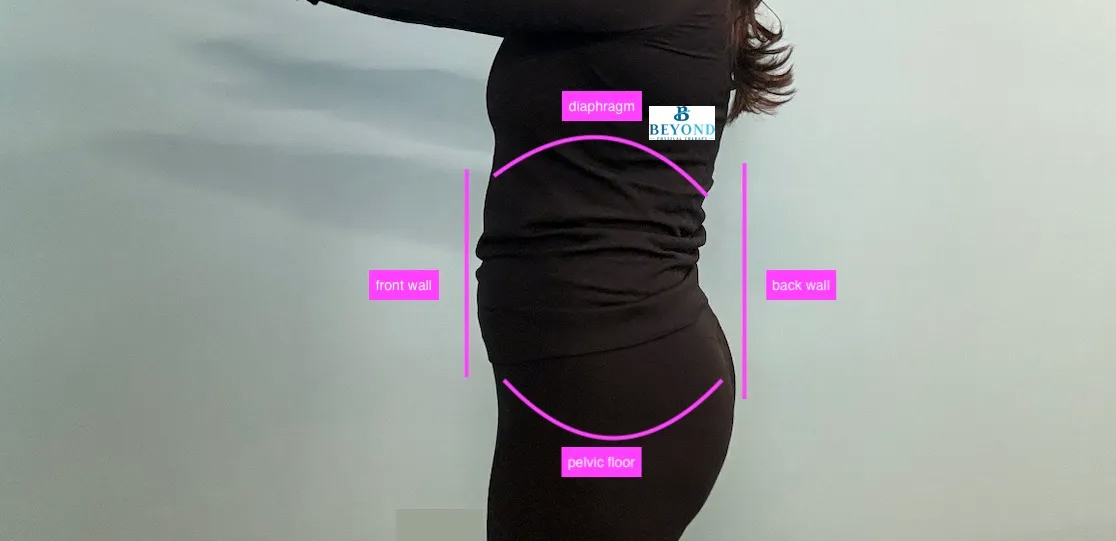Introduction
We hear about the pelvic floor often, but what even is it?
The pelvic floor is a group of muscles, ligaments, and fascia at the base of the pelvis. It functions to support the pelvic organs, plays a role in respiration, posture, and pressure management, and allows for sexual function, urination, and defecation.
The image above shows a depiction of how the pelvic floor works as the floor of the pelvic cavity, moving in sync with the diaphragm (the ceiling of the abdominal cavity), as well as the abdominal muscles as the front wall and the spine and back muscles as the back wall.
Oftentimes, we focus on training the abdominal muscles and the back muscles as our “core,” but neglect breath work and pelvic floor work!
Muscles
The pelvic floor consists of many muscles, typically grouped into three layers.
Layer 1:
– Bulbospongiosus
– Ischiocavernosus
– Superficial Transverse Perineal
– External Anal Sphincter
Layer 2
– Deep Transverse Perineal
– External Urethral Sphincter
– Compressor Urethrae (only in individuals with a vagina)
– Urethovaginal Sphincter (only in individuals with a vagina)
Layer 3
– Pubococcygeus
– Puborectalis
– Iliococcygeus
The muscles of the pelvic floor work as any other muscles, by contracting and relaxing. Due to the shape of these muscles, the collective contraction creates a lift of the pelvic floor up towards the direction of the head. The collective relaxation of the muscles creates a relative lowering of the pelvic floor away from the direction of the head. Further, a motion called bearing down (which is used when you have a bowel movement) further lowers the pelvic floor away from the direction of the head.
Pelvic PT focuses on optimizing the function of the pelvic floor muscles through strength, mobility, coordination, and pain management.
What are the best pelvic floor exercises?
This is a common question we get at BEYOND Physical Therapy! The most accurate answer is….it depends! Exercises involving the pelvic floor can include breath work, strengthening, lengthening, hip control, and integration into functional movements like squatting or walking.
At BEYOND PT, you and your Physical Therapist will discuss your symptoms (if you are experiencing any) as well as your goals. You will then engage in an evaluation to determine what exercises would be best for your specific needs! We believe in a personalized approach to care – rather than a one-size-fits-all model, our treatments are tailored to help you move, feel, and function at your best.
To learn more, schedule a session with one of our specialists in pelvic health! Sign up for your free 15-minute Introduction Call here.


